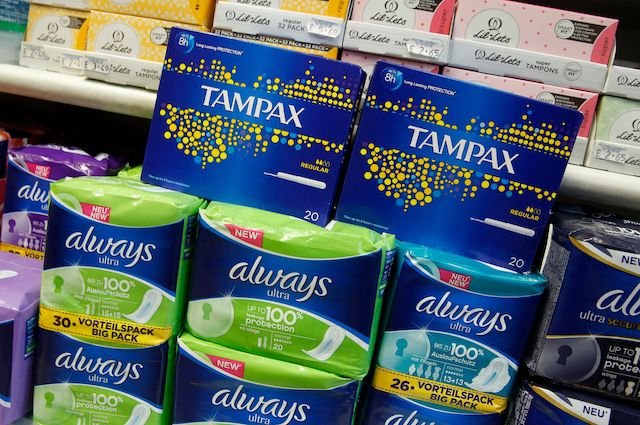NY May Make Menstrual Hygiene Companies List Product Ingredients On Label
June 27, 2019, 11:10 a.m.
"I know what's in my toothpaste and my shampoo, I should know what's in my tampons."

You may finally get to know what's in your pads and tampons.
Local menstruators may soon get to know what, exactly, goes into their tampons, if certain New York lawmakers get their way. Last week, both the Assembly and Senate passed legislation obligating makers of tampons, pads, menstrual cups, and period underwear to disclose their ingredients on packaging—now, Governor Andrew Cuomo just has to sign it.
"We put tampons and pads in our bodies for years on end, but we have no idea what manufacturers put in these products," Linda Rosenthal (D-Manhattan), who sponsored the measure in the Assembly, told the Times Union. "Those [manufacturers] with nothing to hide will welcome transparency and the opportunity to empower consumers with information needed to make wise purchasing decisions."
Along with floss and condoms, pads, tampons, menstrual cups, and other period products fall into the Food and Drug Administration's medical device category, meaning manufacturers don't have to go into specifics about the materials that may lurk inside them. Some companies do offer more details to consumers who take the time to visit their websites, but the information you find there may still sound vague (a tampon core made of "cotton and/or Rayon of varying levels optimized for performance" over at Tampax) or disconcertingly chemical (a pad made of "wood fluff pulp, polypropylene and polyethylene fibers, cellulose tissue, superabsorbent [sodium polyacrylate]" from Kotex).
Disclosure advocates worry that menstrual products contain toxins—dioxins, carcinogenic pollutants that can result from bleaching; pesticides; phthalates; allergens—that might leach into the bloodstream through vaginal tissue, and escalate consumers' risk of toxic shock syndrome. Critics of the legislation argue that any residual contaminants would occur in negligible amounts: According to the FDA, for example, the menstrual products you find on the market today have all been reviewed, and all charted dioxin levels below the danger limit.
Still, considering the nature of these items and where you put them, it might not hurt to know what they're made of. As Rosenthal—who has sponsored an array of bills promoting menstrual health and hygiene, including a measure to establish a research program to investigate potential toxins in period products—put it in a statement, "I know what's in my toothpaste and my shampoo, I should know what's in my tampons."
If passed, the legislation would make New York the first state in the nation to enforce mandatory ingredient disclosure on feminine hygiene product labels. Two New York representatives (Democrats Grace Meng and Carolyn Maloney) have pushed for a similar bill, the Menstrual Products Right to Know Act, in Congress for years. Meng reintroduced the measure in April, but it subsequently stalled out in committee.